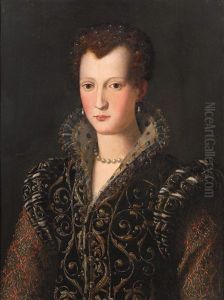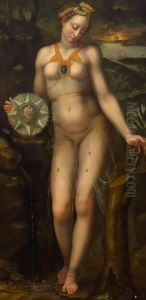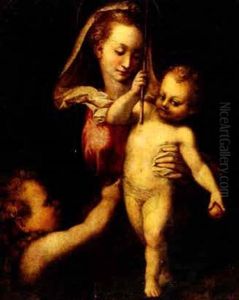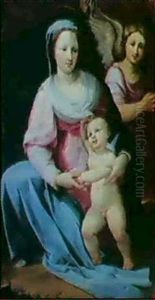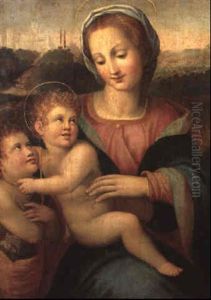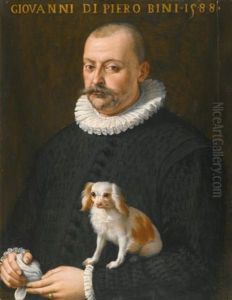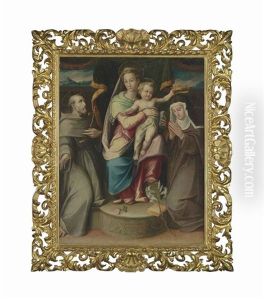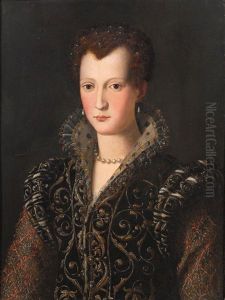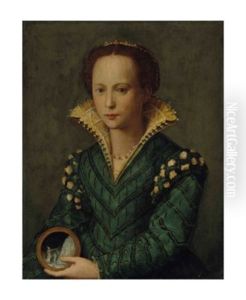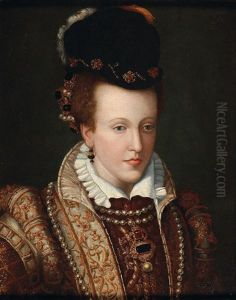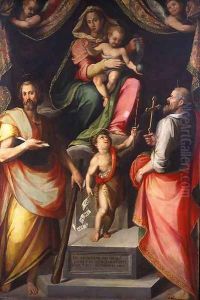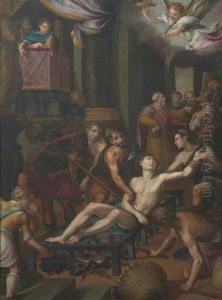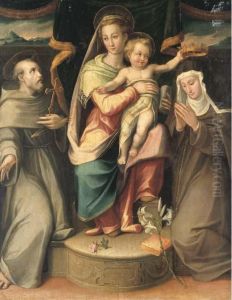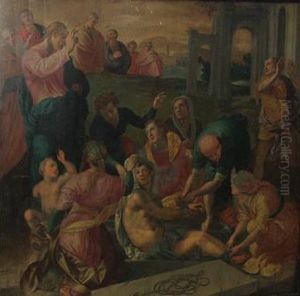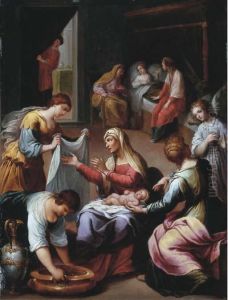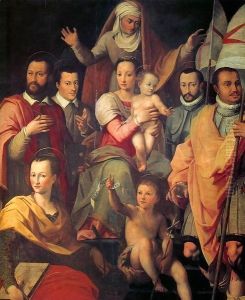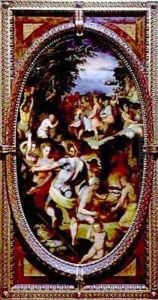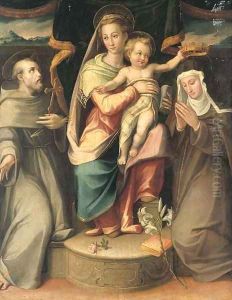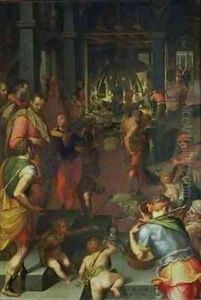Giovanni Maria Butteri Paintings
Giovanni Maria Butteri was an Italian painter of the late-Renaissance period, active mainly in Florence. Born in Florence around 1540, Butteri is known for his work during the transition from the Renaissance to the Mannerist style. Although not as famous as some of his contemporaries, he was a talented painter whose works contributed to the rich tapestry of Italian art during a period of significant cultural change.
Butteri's artistic training and early influences are not well-documented, but it is believed that he was a pupil of the prominent Mannerist painter, Giorgio Vasari. Under Vasari's guidance, Butteri would have been exposed to the sophisticated and stylized techniques characteristic of Mannerism, which included artificial poses, elongated figures, and unusual perspectives. These elements often appeared in Butteri's own paintings.
Throughout his career, Giovanni Maria Butteri produced a variety of works, including religious subjects, portraits, and mythological scenes. His style was marked by its elegance and attention to detail, as well as the use of bright and vivid colors. One of his significant commissions was a series of frescoes for the Palazzo Vecchio in Florence, where he worked alongside other artists to decorate this important civic building.
Unfortunately, despite his contributions, Butteri did not achieve the same level of fame as some of his peers, and his works have often been overshadowed by those of more prominent artists of the time. However, his paintings can still be found in various Italian museums and churches, serving as a testament to his skill and dedication to his craft.
Giovanni Maria Butteri passed away in 1606 in Florence, leaving behind a modest but important legacy in the history of Italian Renaissance art. His life and works continue to be studied by art historians who appreciate the subtle nuances of the Mannerist style and its impact on the development of European art.
